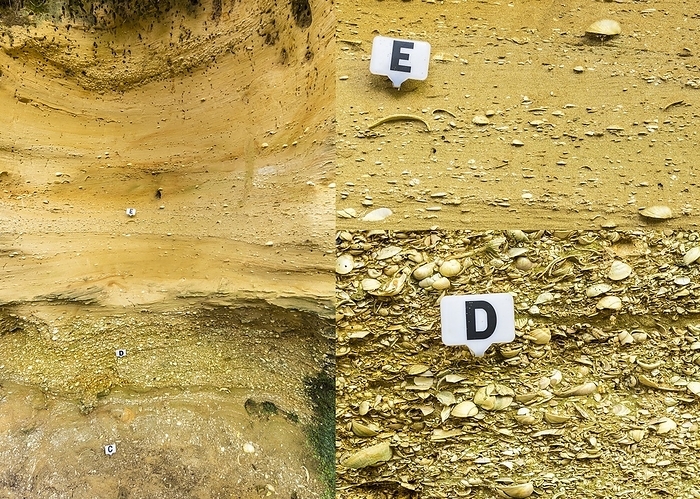
RM
Ancient sand and shell layers
19 million years ago there was an enormous bay in South West France in what is now Aquitaine. The sand laid down is still not cemented into a sandstone yet but the strata show periods with large quantities of shells, like layer D, while others, like E, have few on no shells in the limestone sand. This face was exposed by a small river. The shells are very similar to shells found today on the seashore and permineralization, replacement of bone or shell by minerals, has barely started. Mollusc shells, sand dollars and sea urchins with ages ranging from a few thousand years to 75 million years have been known to survive with little change, except the loss of colour., Photo by MARTYN F. CHILLMAID/SCIENCE PHOTO LIBRARY

More
Top Categories
